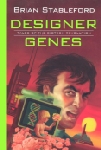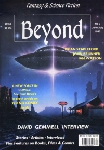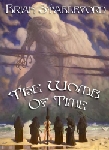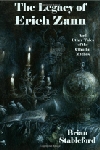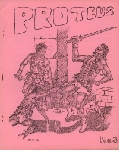Review by Ian Braidwood
For me, the main reason for interest in this story is that it forms
the germ around which, not only Curse of the Coral Bride, but
an entire six novel sequence will grow. Whether or not these novels
of the far future will ever get written and published is of course,
another question. So perhaps this story will be the subject of daydreams
about what might have been. If so, then there's not a great deal from
which we can speculate.
For all intents and purposes, this is a fantasy with a faint medieval
and mediterranian feel. There is nothing to suggest that in fact, the
action is taking place on the inside of a Dyson sphere and perhaps when
it was written, it wasn't, because Zothique is the creation of Clark
Ashton Smith; set on a dying Earth, far in the future. My knowledge
of Zothique goes no further, so neither will I.
This story turns around Giraiazal, astrologer to the court of the island
of Cyntrom, whose 'gift' seems to have more veracity than that of modern
astrologers, without losing the dubiousness quality of that 'discipline'.
Forecasts in Cyntrom have an ambiguous quality which can trip up even
the wariest believer and leave them dealing with the most unexpected
consequences.
Nevertheless, Giraiazal seems able to maintain his position serving
the royal family and mediating between its competing factions. He guides
the kingdom through several episodes unitl fate comes knocking on his
door.
Actually, the signs for Coral Bride seem quite good on the strength
of this, because it is a good story. I have of course, no knowledge
of Zothique, so I can't tell whether any Clark Ashton Smith fan should
follow this up, but I do know Brian's ability to undermine expectations
while delivering the goods.






